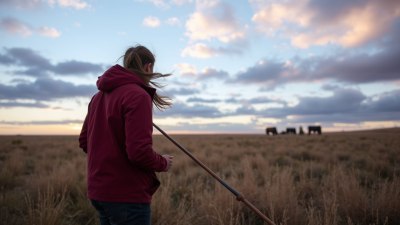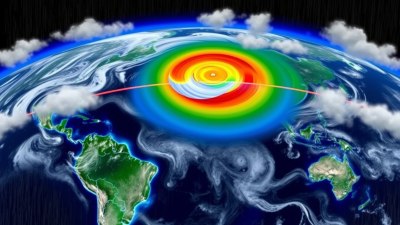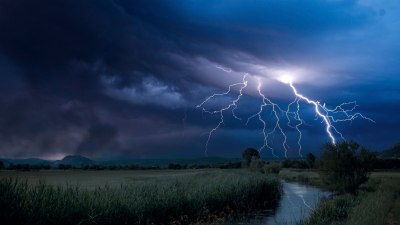Why Your Plans Change the Moment the Wind Picks Up
Explore why sudden wind changes disrupt your plans and how to adapt effectively. Understand the impact of wind on daily activities.

Image created with Flux Schnell
Have you ever experienced a perfectly arranged plan suddenly unraveling the moment the wind picks up? Whether you are setting up a picnic, flying a kite, or conducting outdoor work, a sudden gust of wind can alter your entire schedule. This common yet perplexing phenomenon is more than just a nuisance; it reflects the dynamic interplay between environmental conditions and human intentions. Understanding why your plans change at the moment the wind intensifies can help you adapt swiftly and make better decisions in outdoor settings.
The Unpredictability of Wind
Wind is a natural force created by the movement of air from high-pressure to low-pressure areas. It is inherently variable and influenced by numerous factors, including geography, temperature changes, and weather systems. This variability means wind speed and direction can change rapidly and unexpectedly, often within moments.
Because wind is so unpredictable, plans that depend heavily on calm or steady air conditions become vulnerable. For example, outdoor events such as weddings, sports practices, or construction projects usually assume stable weather patterns. When the wind picks up suddenly, these assumptions break down, forcing alterations to your plans.
The Physical Impact of Wind on Activities
Wind can affect plans physically in multiple ways. First, it can make outdoor environments uncomfortable or even unsafe. Strong winds can blow dust, debris, or even lightweight objects, creating hazardous situations. This may require pausing activities or relocating to safer areas.
Second, wind directly interacts with any material or equipment being used outdoors. Tents, canopies, and decorations might become unstable or damaged, making it necessary to secure these items or disassemble them entirely. Sports like kite flying or sailing rely on specific wind conditions; an abrupt change can transform an ideal moment into a frustrating experience or even a danger.
The Psychological Influence of Wind Changes
Beyond the physical challenges, sudden changes in wind also have psychological effects. Human beings often rely on routine and predictability to plan their activities. When nature introduces an unexpected element like a sudden breeze or strong gust, it disrupts this sense of control.
This disruption can lead to stress, anxiety, or frustration. For example, an artist painting outdoors may lose focus if a gust blows their materials away. A family having a picnic might feel tense as napkins flutter uncontrollably and food is threatened by blowing dust. These emotional responses can compel you to alter your plans or cut them short.
Environmental Cues for Wind Changes
To reduce the impact of sudden wind shifts, it's crucial to recognize environmental cues signaling a change. Often, certain signs precede an increase in wind speed. Darkening clouds, shift in temperature, or the movement of tree branches can all hint at impending wind gusts.
Understanding these cues enables you to anticipate changes and adjust accordingly. For instance, you might secure loose items before the wind rises or move sensitive activities indoors preemptively. Learning to read the environment is an essential skill for outdoor planning.
Technological Tools to Monitor Wind
In today’s digital age, technology offers helpful solutions to manage the impact of wind on plans. Weather apps provide real-time updates on wind speed and direction, allowing for better forecasting. Portable anemometers can measure exact wind forces at your location, giving immediate feedback on conditions.
Using these tools effectively means integrating forecasts into your planning process and being ready to modify schedules or activities when data indicates upcoming wind changes. This proactive approach minimizes surprises and helps preserve your planned agenda.
Strategies to Adapt Your Plans When the Wind Picks Up
Flexibility is key when dealing with the wind’s capricious nature. Here are some practical strategies to adapt:
- Secure Loose Items: Always prepare for possible gusts by fastening tents, tables, and decorations.
- Choose Wind-Sheltered Locations: Position your activities in areas shielded by buildings or natural barriers like trees and hills.
- Plan for Alternative Indoor Options: Have backup venues ready if outdoor conditions become unfavorable.
- Use Appropriate Equipment: Select materials that are wind-resistant or weighted down.
- Communicate Changes Early: Inform participants in advance about potential plan modifications to reduce frustration.
Impact of Wind on Mobility and Transportation
Wind affects not just leisure activities but also transportation. Strong winds can delay flights, disrupt ferry schedules, and make driving hazardous. High-profile vehicles, such as trucks and buses, may struggle to maintain stability during gusts, leading to accidents or slowdowns.
Because transportation is often integral to executing plans, these effects underscore the importance of monitoring wind conditions. Adjusting travel times, selecting alternate routes, or rescheduling trips can prevent complications brought on by unexpected wind changes.
Wind and Safety Considerations
Safety should be a primary concern when the wind picks up unexpectedly. Flying debris poses risks to eyes and skin; falling tree branches may endanger those nearby. Outdoor electrical equipment can become hazardous if exposed to wind-driven rain or dust.
When winds reach high speeds, it’s advisable to seek shelter, avoid open fields, and remain vigilant about surroundings. Training in recognizing wind-related hazards and having emergency plans can significantly reduce risks associated with sudden wind changes.
Long-Term Planning and Wind Awareness
While sudden winds necessitate immediate reactions, long-term planning can mitigate their disruptive effects. For example, when designing outdoor spaces, incorporating windbreaks such as hedges, fences, or architectural features can lessen wind intensity.
Similarly, scheduling events seasonally or selecting times of day with historically milder winds can enhance success rates. Understanding local wind patterns through climatology studies enables better timing and site selection for repetitive outdoor activities.
Case Study: Outdoor Events and Wind Challenges
Consider an outdoor wedding planned months in advance. The organizers assume a calm afternoon but, on the day, an abrupt windstorm arises. Garden decorations topple, tablecloths flap uncontrollably, and speeches are drowned by the roar.
Because the team anticipated such possibilities, they had weighted centerpieces, sturdy tents, and backup indoor space ready. Quick response enabled relocation and minimal disruption. The guest experience remained enjoyable despite the weather challenge.
Psychological Flexibility and Wind
Developing psychological flexibility aids in coping when plans change due to wind. This involves accepting that nature is uncontrollable and that adaptability creates resilience. Being mentally prepared for adjustments reduces anxiety and promotes creative problem-solving.
Practices such as mindfulness and stress-management techniques can help maintain calm and focus during unexpected wind disruptions, improving decision-making and overall experience.
Wind in Different Climates and Its Varied Effects
Wind characteristics vary depending on the climate. Coastal regions often experience consistent breezes that can be factored into everyday planning, while desert areas may have sudden, intense dust storms. Mountainous zones exhibit rapidly changing wind patterns due to elevation and terrain.
This diversity means that location-specific knowledge is essential. What may be a minor inconvenience in one area could turn into a major hazard elsewhere. Tailoring your approach based on geographic context ensures safer and more successful outcomes.
Tools and Gear Designed for Windy Conditions
For enthusiasts and professionals regularly exposed to wind, specialized gear is crucial. Windbreakers, weighted picnic blankets, and sturdy tents with reinforced poles offer protection. In sports, sailing requires sails designed to handle variable pressures; flying kites demands tethers and controls suited for gusts.
Investing in appropriate equipment not only protects your belongings and enhances comfort but also ensures that activities can continue safely and enjoyably despite wind challenges.
Using Wind to Your Advantage
Although wind often causes disruptions, it also presents opportunities. For example, wind energy harnesses this natural force for sustainable electricity production. Outdoor sports like kite surfing and paragliding rely on wind to provide exciting experiences.
Recognizing wind’s positive potential allows planners and participants to align their activities with wind patterns rather than merely reacting against them. This proactive mindset leads to greater harmony with the environment and more enjoyable outdoor time.
The moment the wind picks up, your plans may need urgent revision. This phenomenon arises because wind is inherently volatile, affecting physical conditions, safety, and human psychology. By understanding wind’s nature, monitoring environmental cues, using technology, and adopting flexible strategies, you can mitigate its disruptive effects.
Whether you face a gentle breeze or a strong gust, being prepared will help maintain momentum and keep your outdoor activities thriving. Embracing wind not just as a challenge but also as a resource unlocks new possibilities and enhances your connection with the natural world.











